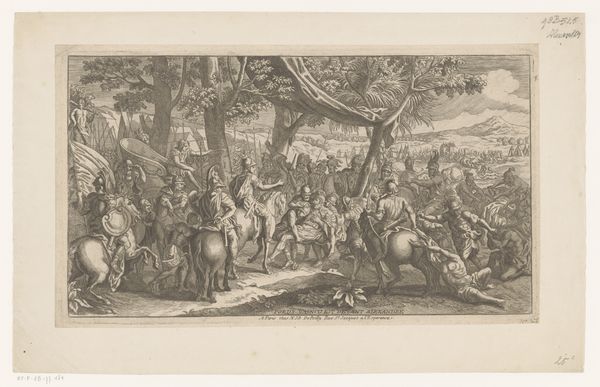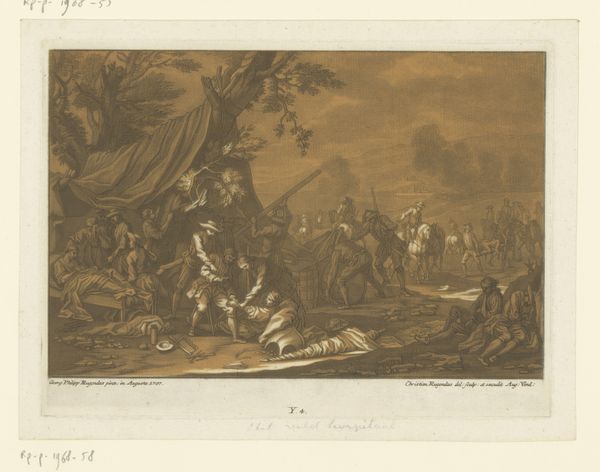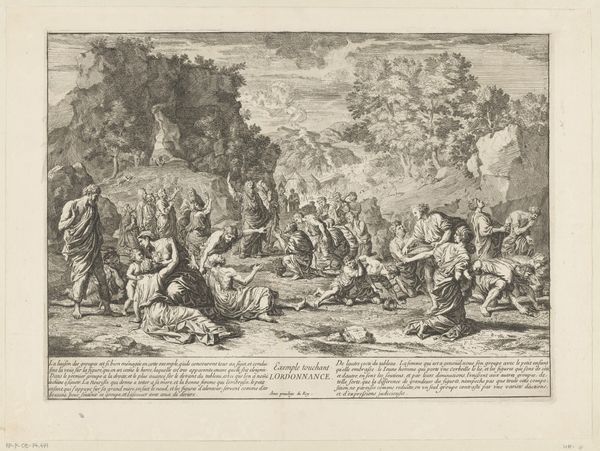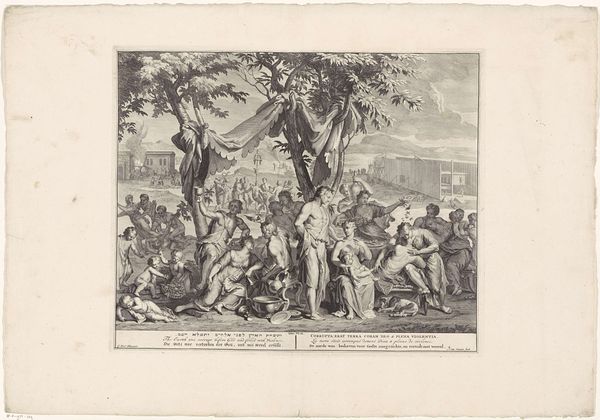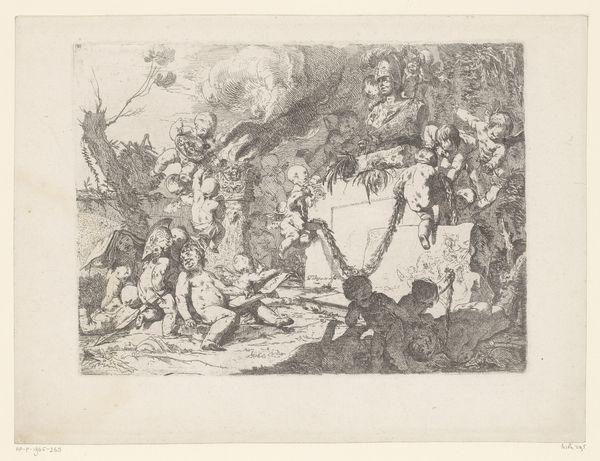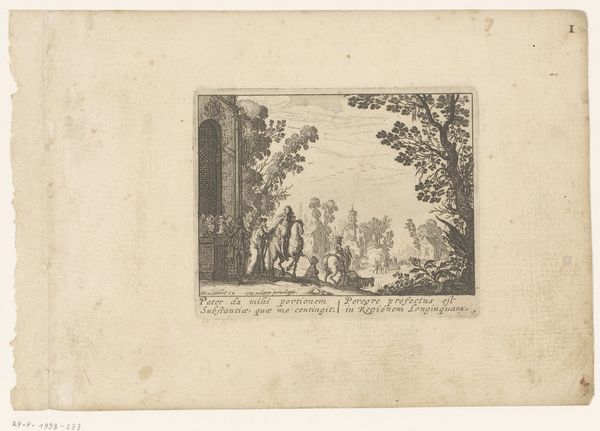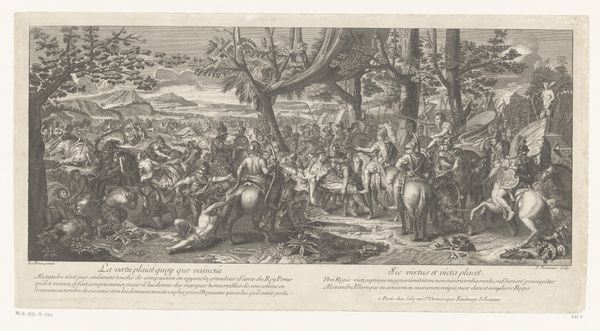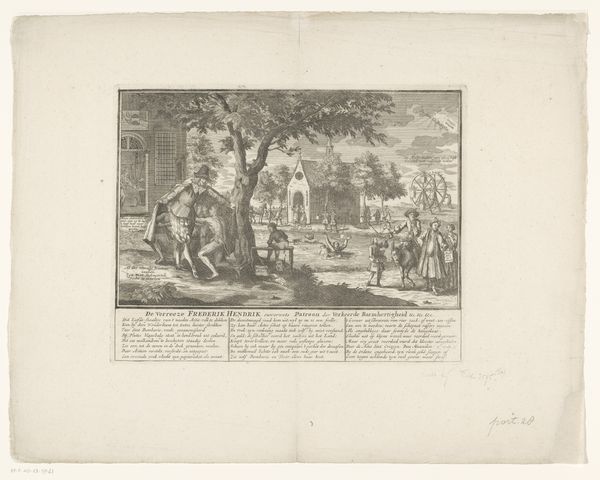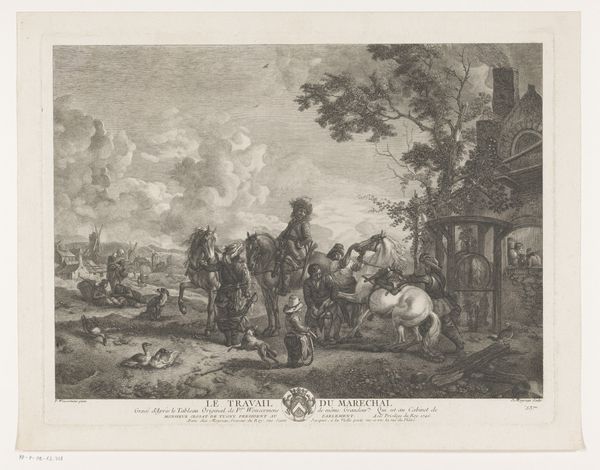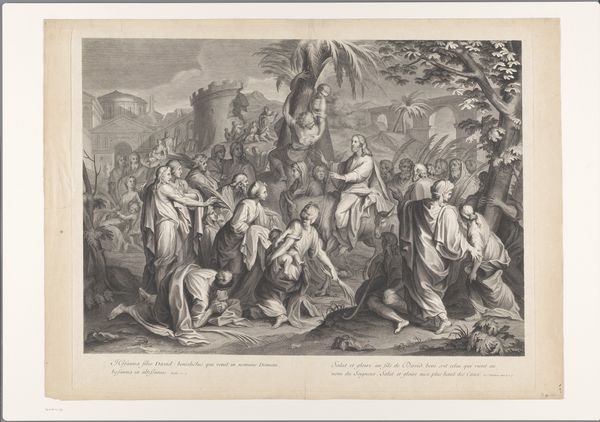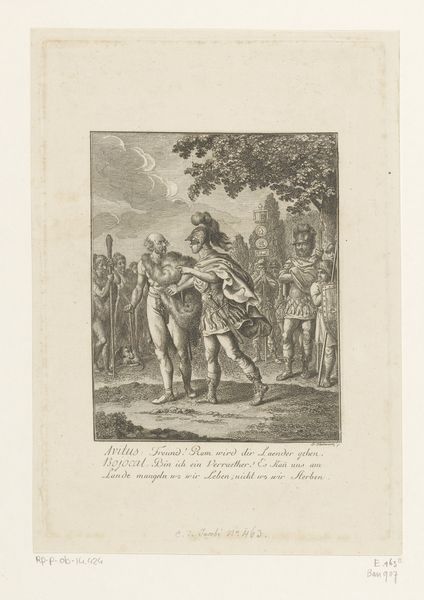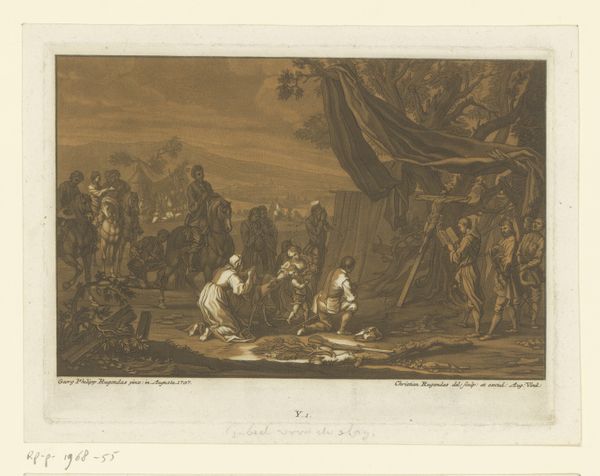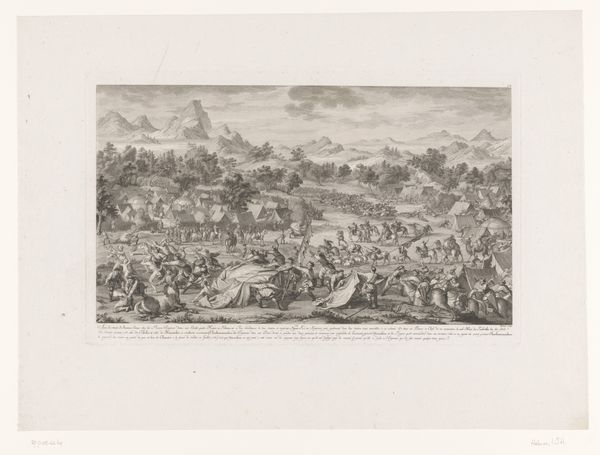
print, paper, engraving
#
neoclacissism
#
narrative-art
# print
#
landscape
#
paper
#
history-painting
#
engraving
Dimensions: height 183 mm, width 220 mm
Copyright: Rijks Museum: Open Domain
Curator: This print, "Willem Tell schiet de appel van zijn zoons hoofd", or "William Tell Shooting the Apple off his Son's Head," dates to somewhere between 1780 and 1880, credited to Charles Masarb. It employs the engraving technique on paper and, I must say, it immediately evokes a powerful tension. Editor: I agree, there is an immediate sense of dread here, heightened by the crisp detail and the very public display of potential violence. All eyes seem to be glued on the father and son; a group to the left seems supportive, another to the right cowers, either way, their response contributes to the story's emotional gravity. It reads to me as an event laden with historical anxieties. Curator: Absolutely. Tell's legend speaks volumes about Swiss resistance against Austrian rule. Consider the socio-political implications, particularly within the period this piece was created. The late 18th century was a powder keg of revolutionary sentiment. Depictions of rebellion, no matter how historically distant, provided fertile ground for exploring ideas of freedom and resistance to authority. The image of Tell, a man forced into this horrific display of skill, becomes a potent symbol of forced obedience to unjust rule. Editor: What stands out to me are the symbolic implications of the apple. Its association with knowledge and choice gives it particular cultural weight here. It’s no mere target; it represents something to be gained or lost – a symbol for freedom versus tyranny. Placing the apple upon the son's head amplifies the tension, of course, but also represents a familial lineage at risk. It transforms the personal into the political; the father must risk his child’s life to defy oppression. The composition feels constructed to communicate very clearly that his son represents not just a direct bloodline, but future hope and freedom for his homeland. Curator: Indeed. It's a story not merely about skill but about the intersection of individual liberty, parental duty, and political resistance. That narrative has had enduring power precisely because it operates on so many different levels. The composition, seemingly so straightforward, is carefully layered with meaning. Editor: It resonates deeply, prompting one to question authority and the burdens placed on individuals. This particular piece exemplifies how powerful symbolism endures, offering insights into shared historical consciousness. Curator: Yes, the engraving provides a potent glimpse into our persistent need to contextualize acts of resistance. It highlights the value of visual narratives in understanding societal anxieties and aspirations.
Comments
No comments
Be the first to comment and join the conversation on the ultimate creative platform.
